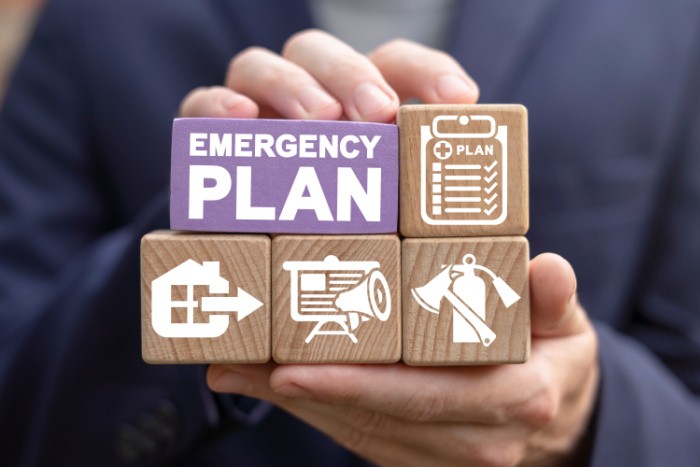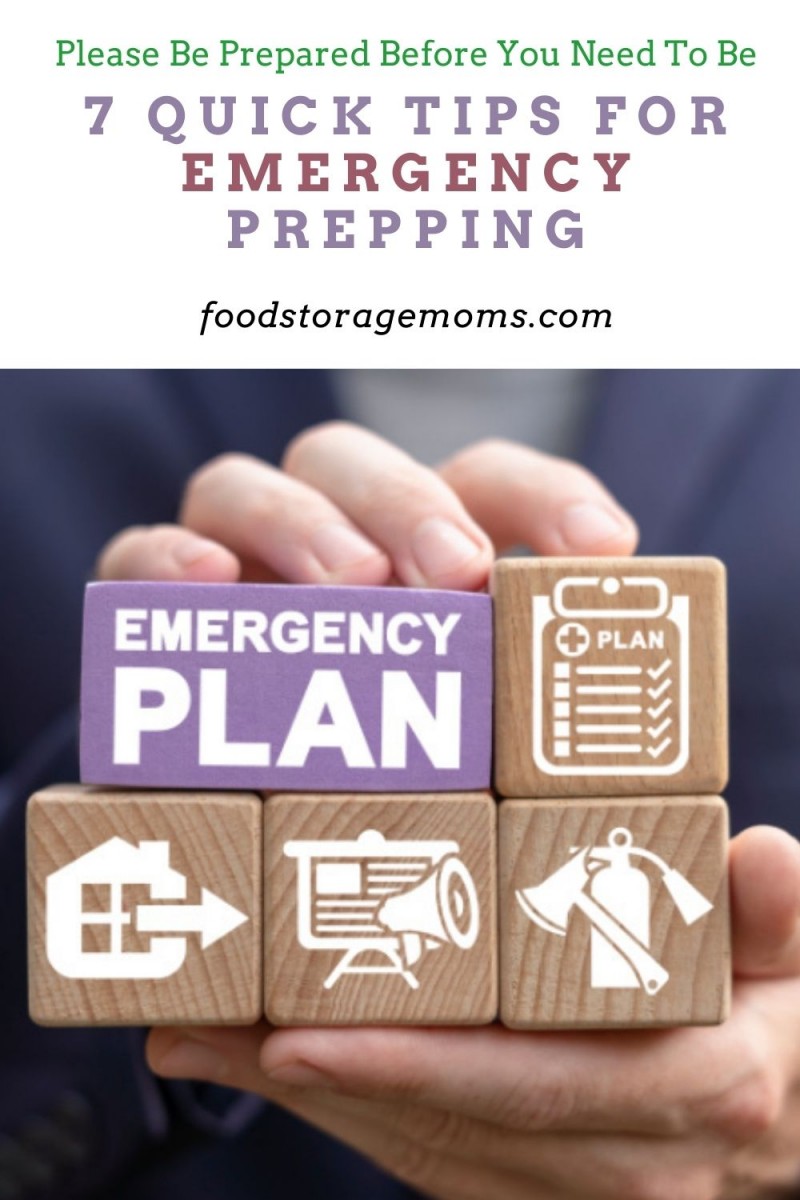
Chances are, if you’re reading this, you’re interested in learning about emergency prepping. And that’s a good thing! Being prepared for emergencies is key to keeping yourself and your loved ones safe when the unexpected happens. But where do you start? These quick tips for emergency prepping will help get you on your way to being a responsible prepper.
What is Emergency Prepping?
Emergency prepping is the process of developing a plan and then preparing for emergencies. This can include anything from stocking up on food and water to having a plan for what to do if the power goes out or communication systems fail.
Emergency prepping is about being prepared for as many things as possible, particularly those disasters that are most likely to happen based on where you live. Being properly prepared can be a lifesaver in a true emergency. Emergency preppers often have supplies such as food, water, and first-aid kits stored away in case of an emergency, and they know how to use them. They might also have a generator in case of a power outage, and they know how to purify water in case of a water emergency.
Emergency preppers are always thinking about what could go wrong and how to be prepared for it. While it might seem like emergency prepping is excessive, it can be a lifesaver in an emergency.

7 Tips For Emergency Prepping
In the face of potential disasters, it’s important to have a plan. Here are some tips to help you get started with emergency prepping.
Know What Type of Emergency to Expect
Emergency prepping is all about being prepared for the unexpected. But to do that, you first need to know what type of emergency to expect based on a number of factors, particularly the area where you live.
Are you living in an area that is prone to hurricanes? Then you’ll want to make sure you have an emergency plan in place for that specific type of disaster. The same goes for wildfires, earthquakes, and tornadoes. Knowing what emergency you are likely to face will help you be better prepared if and when the time comes.
So take some time to research the hazards in your area and make sure you are prepared for whatever Mother Nature might throw your way.
Create an Emergency Plan
An emergency plan is a critical part of emergency preparedness. It will help you and your family know what to do in the event of an emergency. The best emergency plans are specific to your family’s needs and emergency situations. But there are some basic elements that every emergency plan should include, such as an emergency contact list, evacuation route, and shelter-in-place options.
Once you have your emergency plan in place, make sure everyone in your family knows it. Review it regularly and update it as needed. The plan also should include what you and your family members would do if you have to evacuate from your home, or if you are separated, where you would meet to bring the family back together.
A critical element is to also practice as a family what to do under various situations. If the kids are old enough, they should be instructed and trained as best as possible.
Sign Up For Emergency Alerts
Emergency alerts can provide you with vital information during a crisis, such as where to find shelter or how to evacuate. They can also help keep you updated on the latest developments in your area that is being affected. Best of all, most emergency alert systems are free to use. So there’s really no excuse not to sign up.
So take a few minutes today to do some research on emergency preparedness in your area. Then, make sure you’re signed up for emergency alerts from your local government, it could end up being the best decision you ever make.
Gather Important Documents
If you’re emergency prepping, one of the most important things you can do is gather all of your important documents in one place. This way, if you ever have to evacuate your home in a hurry, you can grab them and go. But what counts as an important document? Here’s a list to get you started:
- Birth certificates
- Social security cards
- Passports
- Driver’s licenses
- Insurance cards
- Financial documents (bank statements, investment records, etc.
- Medical records
- Contact list for family, doctors, lawyers, insurance agents, and others you may need to contact to protect your life and property
Of course, this is just a starting point – you may have other documents that are important to you and your family. The key is to put them all in one place so they’re easy to find in an emergency. Read Important Documents-Here’s What You Need to Do for more information.
I have a FREE download of the content pages for you. All you need is a binder, preferably a zippered one so the documents will stay safe in your binder. Here is the download, it will show up on your computer in the bottom left-hand corner. It’s a huge file so be patient, it’s FREE and worth the wait, I promise. I recommend using card stock when you print it out.
- I have the link for you to easily print these pages at the bottom of this paragraph. I suggest you get some colored tabs (ten tabs) to go with your binder like these: Avery Extrawide Ready Index Dividers, Laser/Ink Jet, 9.5 x 11 Inches, Assorted, 10 Tabs, 1 Set (11165)
- Get some zippered binder pockets like these: Cardinal Expanding Zipper Binder Pocket, Clear, 3/PK (14201)
- I used baseball card pages or photo pages similar to these: Avery Horizontal Photo Pages, Acid-Free, 4 x 6 Inches, Pack of 10 (13406)
- I also purchased binder pockets like these: Avery Binder Pockets, Acid-Free, Pack of 5 (75254)
- Page protectors like these: Avery Standard Weight Sheet Protectors, Pack of 25 Sheet Protectors (75530)
- Zippered Binder
Food Storage Moms FREE Printable Emergency Binder Download
Prep Your Pantry
If you’re emergency prepping, one of the most important things you can do is make sure your pantry is stocked and ready to go. Of course, the items you include in your pantry will depend on your specific needs and location. But there are some basics that everyone should have on hand, including non-perishable food items, water, and first-aid supplies. If you want to be extra prepared, you can also consider stocking up on batteries, flashlights, and other emergency supplies.
The best way to prep your pantry is to stock up gradually. That way, you won’t be overwhelmed (and broke) all at once. Start by picking up a few extra canned goods every time you go to the store. Then, add some water storage containers and emergency supplies to your list. Before you know it, you’ll have everything you need to weather any storm.
Pantry Shopping List:
Here are some non-perishable food items to include in your emergency pantry:
- Canned fruits and vegetables
- Canned meat
- Dried beans
- Peanut butter
- Bread
- Crackers
- Oatmeal
- Rice
- Pasta
- Cereal
- Powdered milk
- Water storage containers (at least 3 gallons per person)
Or, read What You Need in Your Food Pantry for a more detailed shopping list.
Other Items To Get:
Pack a Bug-Out-Bag
A bug-out bag is an essential part of any emergency preparedness plan. It’s a backpack or duffle bag that contains everything you need to survive for 72 hours in the event of an emergency evacuation. So if you have to leave your home in a hurry, you can grab your bug-out bag and go.
The contents of your bug-out bag will depend on your specific needs. But there are some basics that every bag should include, such as food, water, shelter, and clothing. You should also include a first-aid kit, emergency supplies, and any personal items you might need, including critical prescriptions.
Here’s a list of items to include in your bug-out-bag:
- Water (at least 3 gallons per person)
- Food (non-perishable items like canned goods, cereal, and granola bars)
- Shelter (tent, sleeping bag, emergency blanket)
- Clothing (extra clothes for all weather conditions)
- First-aid kit
- Emergency supplies (flashlight, batteries, radio, etc.)
Or, read The Most Comprehensive Bug Out Bag Checklists for a full detailed list of what you need in your bags.
Store Everything Properly
Once you have all of your emergency supplies, it’s important to store them properly. That way, they’ll be ready to go when you need them.
Here are some tips for storing your emergency supplies:
- Keep food in sealed, airtight containers.
- Store water in clean, food-grade containers.
- Rotate your food and water supplies every 6 months.
- Keep emergency supplies in a cool, dry place.
- Check your emergency supplies regularly to make sure they’re still good.
Read How to Properly Store Food for Long Term Storage to make sure your food weathers any storm.
Final Way
Emergency preparedness is vital for every family. But it doesn’t have to be complicated or expensive. By following these simple tips, you can be ready for just about anything.
So what are you waiting for? Get started on your emergency preparedness today! We can do this! May God Bless this world, Linda
Copyright Images: Emergency Plan AdobeStock_439637628 by wladimir1804
